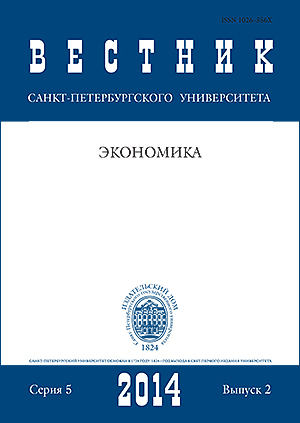Former Soviet Union countries and the European Union: Overcoming the Energy Efficiency Gap
Abstract
In this paper, we analyzed the FSU countries for energy intensity during 1995–2010. We figured out 3 clubs in GDP per capita. Two countries (Turkmenistan and Kyrgyzstan) have demonstrated divergence and were excluded from further analysis. We found evidence of β-convergence in income for every club pooled with EU13, wherein the convergence rate is higher for countries with a low level of development. We investigated the rate of convergence in energy intensity of GDP and identified factors that affect it. The convergence based on its own tendency to the average level EU13 energy intensity exists in almost all FSU countries. The convergence based on per capita GDP tendency to the average level of EU13 exists in almost all countries. In several countries one or both of these factors do not affect the speed of convergence. We provide possible explanations for this behaviour. Empirical results to a certain extent support the hypothesis that energy intensity of GDP in resource-rich countries declines more slowly than in the entire sample. Refs 23. Figs 3. Tables 3.
Keywords:
Club convergence, convergence, energy intensity, transitional economies, former USSR
Downloads
References
References in Latin Alphabet
Translation of references in Russian into English
Downloads
Published
How to Cite
Issue
Section
License
Articles of the St Petersburg University Journal of Economic Studies are open access distributed under the terms of the License Agreement with Saint Petersburg State University, which permits to the authors unrestricted distribution and self-archiving free of charge.






